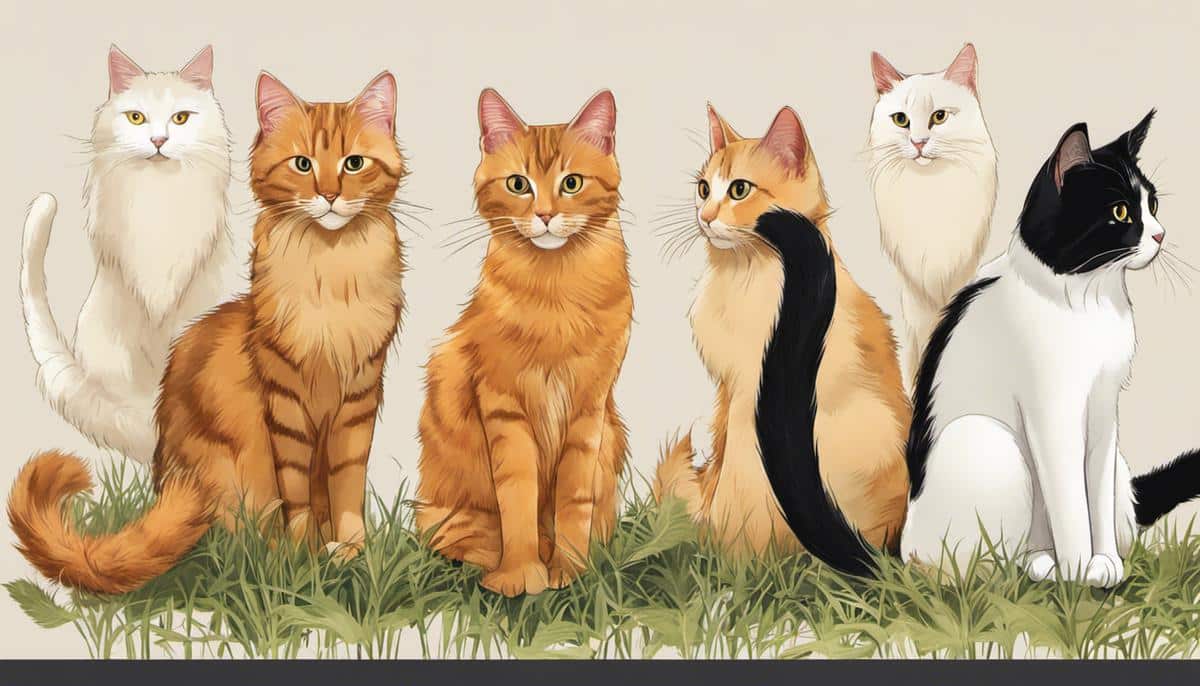
Understanding our pet cats goes beyond simply feeding and petting them. A large part of this understanding heavily relies on unraveling their unique non-verbal cues, a critical aspect of which is the flicking of their tails. It’s not just an adorable feature, but a complex means of communication, conveying everything from fear and aggression to contentment and playfulness. This deeper insight into feline body language allows us to foster a more harmonious and respectful relationship with our furry friends. We delve into the fundamentals in this exploration, identifying tail behaviors, tail health, and how to respond to tail flicks for a better cohabitation experience. We also discuss how to help children understand such signals, fostering empathy and a healthier pet-human relationship from an early age.
Interpreting the Basics of Tail Flicking
Cracking the Cat-Tail Code: Understanding Feline Messaging
From the mischievous calico to the sage old tabby, cats bring a unique charm to our households. Each one has a distinct personality, and part of the joy of sharing your home with a cat comes from understanding their quirky behaviors. One notable behavior that often puzzles parents is cat tail flicking. If you’ve ever wished for a feline interpreter, we’ve got you covered with a few tips on how to decode your beloved pet’s tail-flicking language.
Firstly, let’s clear one thing up: a cat’s tail is an extension of their spine. It plays a significant role in balance, but more than that, it’s a critical tool for communication. From the positioning and movement to the intensity and speed, your cat’s tail holds the key to understanding what they’re trying to say. So, grab a cup of tea, cuddle up with your favorite feline, and let’s dive into the world of cat tail flicks!
The Happy Tail
A slight quiver or a high-arched tail can indicate contentment. If you’ve ever noticed your cat bounce toward you with their tail quivering or clearly raised, it’s a sign of pleasure and affection. They’re offering a harmonious hello before settling in your lap for some much-needed cuddle time. It’s like their way of saying, “Hey, it’s snuggle o’clock!”
The Annoyed Tail
Is your cat frantically whipping or thrashing its tail from side to side? That’s usually a clear sign of agitation or annoyance. Maybe they’re done with playtime, or perhaps they’re not fond of the noisy vacuum cleaner. Essentially, this horizontal thrashing is your pet’s flag, signaling, “Enough is enough, human!”
The Curious Tail
If your cat enters a room with a low, straight-out tail, it’s a sign of interest or curiosity. Perhaps they’ve noticed a new toy or are intrigued by the scent of freshly baked cookies. This means, “Hmm, what’s happening here?” A prime moment for parents to teach children about respecting our furred family members’ personal space!
The Scared or Angry Tail
Ever seen your cat’s tail puff up like a Christmas tree? This usually occurs when they’re scared, angry, or feel threatened. It’s their way of seeming bigger to intimidate potential threats. Consider it as their silent roar saying, “Back off right now!”
Understanding our pet’s body language, especially something as flexible and expressive as a cat’s tail, is a vital part of creating a harmonious family environment. Remember, everyone under our roof, no matter how small or furry, deserves respect and understanding. So, next time your cat flicks its tail, take a moment to tune into the conversation. You’ll be amazed at what you can learn from these enigmatic creatures. Just remember to approach their language with patience and an open heart. It’s all part of the beautiful mystery of sharing your home with the feline kind. Let this be your family’s new lexicon of love in forming unbreakable bonds with your beloved pet.
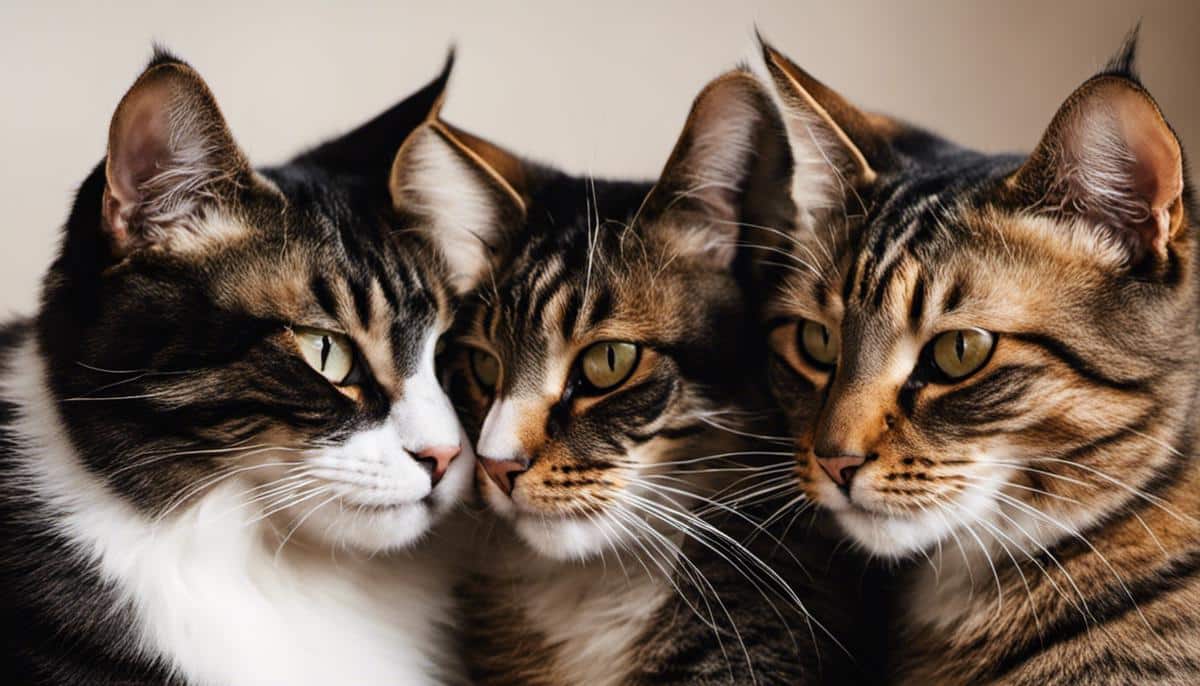
Identifying Different Tail Movements
Smooth, sleek and, oh-so mesmerizing – a feline’s tail sure has a way of capturing our hearts! But did you know, there’s so much more to that fluffy appendage than what meets the eye? It can actually be a fantastic tool for strengthening the bond with your furry family member.
Delving right in, you might have noticed a slow, languid tail sweep every once in a while, and wondered, “What’s that about?” This movement, charmingly dubbed as the ‘lazy tail’, indicates complete contentment. If your feline companion directs this motion at you or a fellow family member, rejoice! It’s a sign that your cat is relaxed and in high spirits.
While we’re on the subject of slow tail movements, let’s touch upon the deliberate tail flick. Contrary to the lazy tail, a careful sweep from side to side might suggest focus and concentration. This is especially true if your furry friend is engaging in play or preparing to pounce on that pesky feather toy. It’s their way of channeling their inner big cat, readying to strike.
Next up, the mysterious question-mark tail. To see a tail curled up at the end like a question mark is to see the embodiment of friendliness and approachability. It’s their way of saying, “Hello, feel free to pet me!” This gesture is often seen when they are in a receptive mood for interaction or play.
While we’re unraveling the tail-flicking mystery, it would be remiss not to mention the tucked tail. This can be a crucial signal for cat owners to understand. A tail tucked beneath the body signifies fear, submission, or nervousness. It’s always prudent to give your feline companion some space and time to regain composure when you notice this sign.
Our exploration of the wonderful world of tail flicks wouldn’t be complete without discussing the vertical tail. Ever been greeted with a straight-up tail, tip slightly twitching? This is the cat’s rendition of a warm hello, often accompanied by their delightful purring. It’s the feline equivalent of a human hug, and if you see it, indulge your pet in some gentle affection.
Cracking the code to cat tail movements can be more than just fascinating – it can significantly improve the relationship between you and your furry pals. Knowing their silent signals and responding accordingly can open up a new avenue for communication, ensuring a home environment where everyone feels loved and understood.
In the end, it’s all about creating a space where every family member – be it two-legged or four-legged – feels safe, loved, and understood. And when it comes to our feline friends, it gets a lot easier once we understand their tail language. So here is to the joyous, puzzling, and endearing journey of understanding your cat’s varied tail flicks!
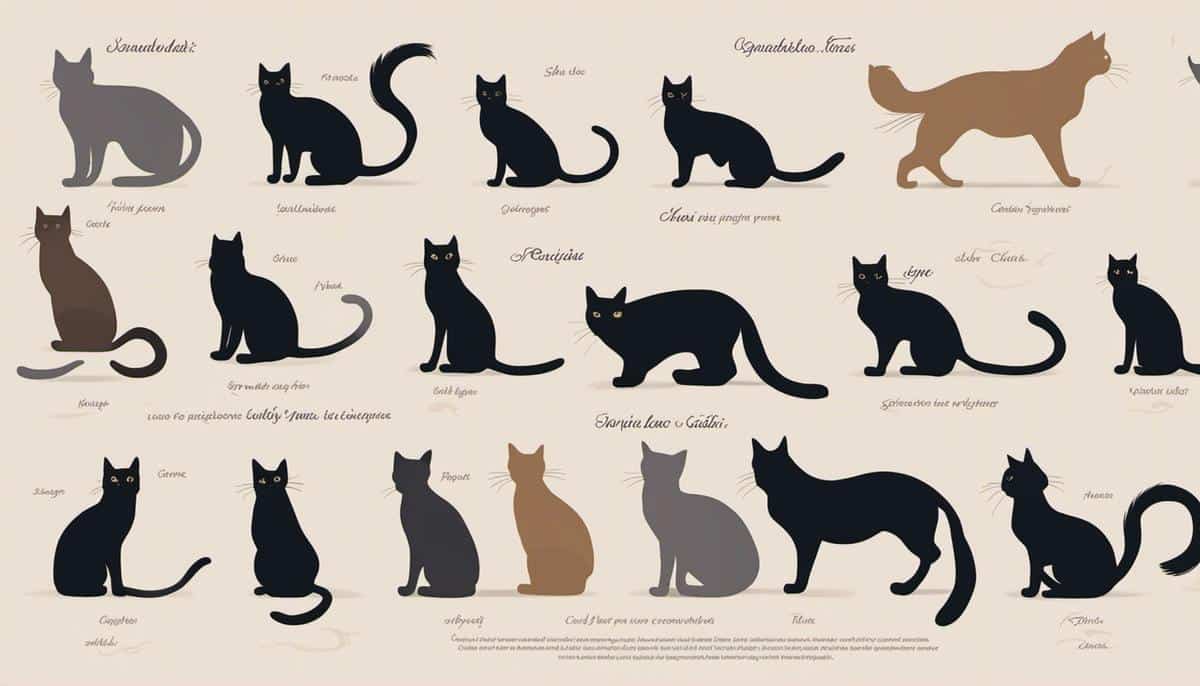
Responding to Tail Flicks
Cats are incredible creatures, aren’t they? They slide effortlessly into our hearts, becoming our secret confidants and carriers of an endearing brand of love.
Now that we’ve already understood a crucial bit of our kitty’s language – their tail flicks, let’s talk about how we humans should respond to these tail flicks.
Firstly, remember a lazy tail? If you spot your feline companion lying around, their tail loosely wrapped around their body, they are contended. The best response to this is to give them their space. Let them have their alone time, basking in their contentment. Just check on them occasionally, showing them you’re there without disturbing their solitude.
Then we have the deliberate tail flick. This twitch is quick and focused, indicating our furry friend’s concentration on something. This could be a toy, a bird outside the window, or maybe even a pesky bug that snuck into your home. When you see this, forego any temptation to distract them. This could break their point of focus and make them a tad annoyed. Let them have their moment, their small adventures.
Cats sometimes parade around with their tails curled like a question mark. It’s too cute, isn’t it? Not only is it adorable, but it’s also a sign that they’re in a friendly mood, ready for some quality human interaction. This is an excellent opportunity for you to engage with your feline friend. Spend time playing with them, give them a good petting session, or simply enjoy a quiet moment together. Your bond with your cat deepens with every shared interaction.
Occasionally, you may notice your feline friend with their tail tucked away. This could indicate fear, submission, or a nervous demeanor. If this happens, it’s essential to identify any potential threats in their environment that might be causing them discomfort. Remember to approach them with slow, calm movements and soft soothing voice to reassure them they are safe with you.
Another lovely tail signal we encounter is the vertical tail. When your kitty approaches you with their tail upright, it’s their warm way to greet you. It’s their ‘Hello, I am happy to see you’ sign. Make sure to acknowledge this little greeting with a warm stroke down their back, a low soothing word, or a gentle pat. Recognition is key to strengthening the sweet bond between both of you!
Understanding these crucial elements of cat communication goes a long way in creating a harmonious home environment. It helps us improve how we communicate with our feline family members, and most importantly, how they communicate with us.
The secret lies in being attentive, respectful, and responding with kindness. By doing so, we reinforce an atmosphere where everyone – including our four-legged pals feels safe, loved, and truly understood. Here’s to creating a home, not just a house – a place filled with joy, respect, and an entire lot of purrfect love!
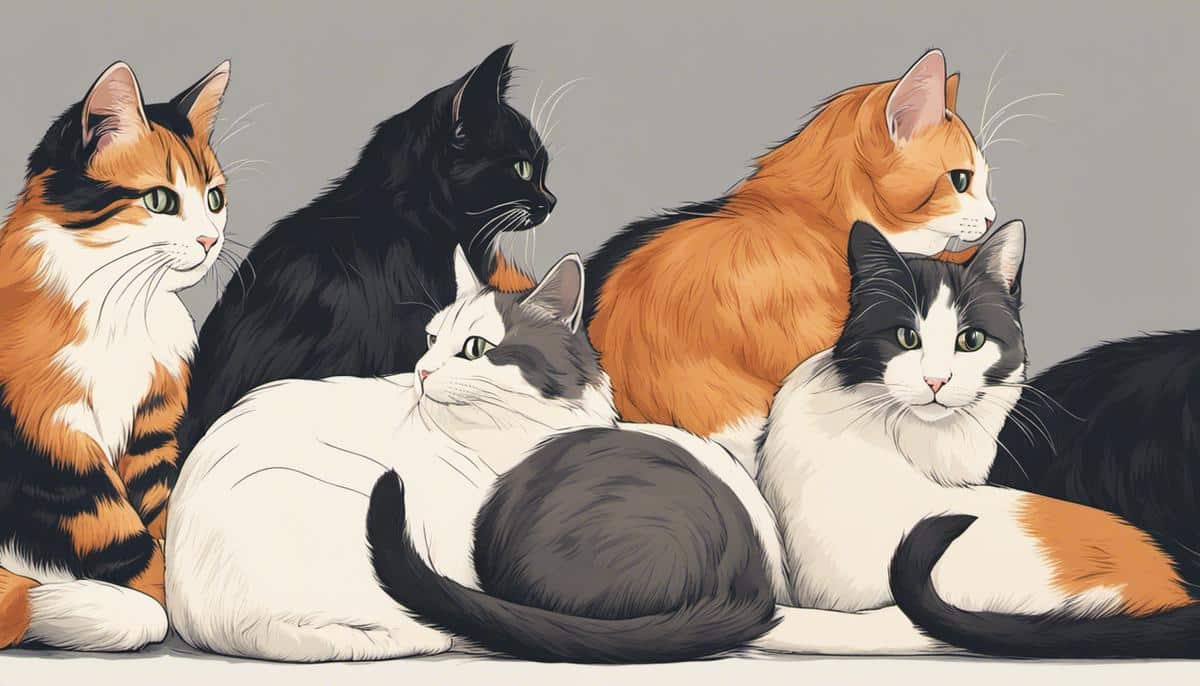
Tail Flicking and Cat Health
Moving forward from that, it is important to discuss the health implications that can follow certain changes in tail movements. Now, it is crucial to mention that while tail language can certainly offer some clues, this doesn’t mean you should play vet at home. Still, let’s press on and give you some more tips as to what to look for.
Sudden changes in tail movements or positions can serve as key indicators for potential health problems. For example, if a cat who usually carries its tail proudly erect starts keeping it tucked away more often than usual, this could indicate physical discomfort or even pain. Certain ailments, such as urinary tract infections or arthritis, can cause this change.
Similarly, an exclusively indoor cat suddenly puffing up their tail without any noticeable external stimulus might be a sign of internal discomfort. Frequent and unexplainable tail “puffs” could indicate an underlying health issue that requires immediate attention.
A cat that is regularly flicking or thrashing its tail, even when not interacting with other pets or family members, might be experiencing an itch it can’t quite scratch. This could indicate anything from fleas to allergies and should be brought to the attention of a qualified veterinarian.
A relaxed, sweeping tail is often associated with a healthy and comfortable cat, while an excessively lazy tail might hint at lethargy or tiredness which could be a symptom of an underlying illness. Notably, if a normally active tail becomes static, it may be time for a vet check-up.
A cat’s tail can serve as a fascinating barometer of various aspects, from mood to health. Decoding it can be a joyful and sometimes challenging task, but above all, it fosters mutual understanding and respect. Let’s remember always to approach these observations tempered with common sense and professional advice, ensuring our whiskered companions always get the best care.
You’re not just a cat owner. You’re a tail interpreter, a cat whisperer, a peace broker in a world where humans and felines coexist. What you’re doing isn’t merely pet-keeping. It’s family building, a nurturing endeavor that enriches your home life. Truly, there’s nothing quite as fulfilling as acknowledging our feline friends as integral family members, receiving their trust, and earning their affection by understanding and responding to their unique language. It makes our bonds unbreakable, love unquestionable, and our homes undeniably homier. Happy decoding!
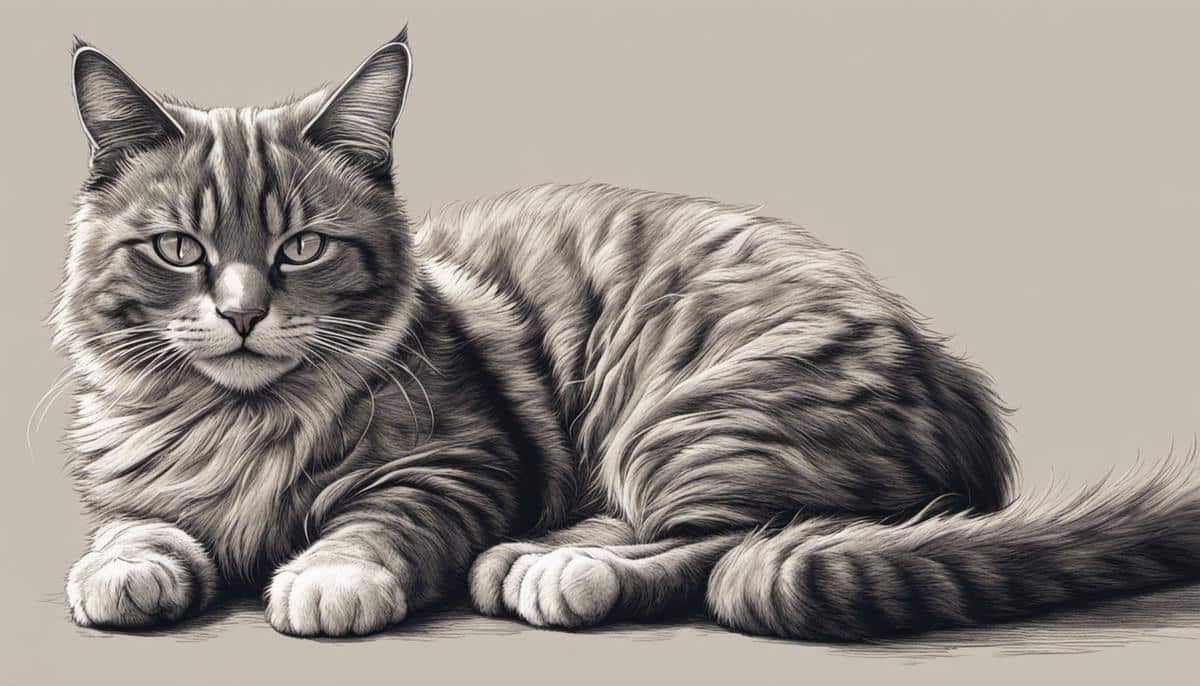
Teaching Kids about Tail Flicking
Just as we have been exploring, a cat’s tail is indeed a fantastic communicator; it’s like a little magical antenna constantly broadcasting messages! But did you know, it’s not just about feelings and emotions, it’s also about health? Absolutely! Tail language can help us detect potential health problems in our feline friends.
For instance, a cat usually tucks its tail away when it’s feeling a bit under the weather. Yes, it can signal fear or nervousness, but if there are no other obvious reasons for your cat to feel distressed, a tucked tail can be a subtle sign of physical discomfort or pain. Make sure to keep a close eye on their behavior. If there are significant changes or your kitty continues to keep its tail tucked for an extended period, it may be time to consult your vet.
A cat puffing up its tail, usually a sign of fear or anger, without any apparent cause, could potentially indicate internal discomfort. This unexpected response might be your cat’s way of dealing with pain or discomfort. It’s crucial to observe these signals and consult with a veterinarian if it persists.
A flicking or thrashing tail may indicate something is irritating your cat. This could range from an itchy coat due to fleas right through to more serious health issues. Pay attention to this and make sure to follow up if you notice any other symptoms or if it continues for an extended period.
On the flip side, a gentle wave or ‘lazy tail’ could tell you that your cat is at ease and feeling well. It can be the reassurance you need that your cat is content and in good health. However, if the tail seems limp, and your cat appears lethargic, it could signal tiredness or even illness. A sudden decrease in activity warrants a quick check-up with your vet to rule out any health issues.
Remember, it is important to combine common sense with professional advice. Keep in mind that every cat is unique, and what might be perfectly normal for one could be a warning sign for another. Regular vet checks are still vital to ensure that your furry friend is staying healthy.
Decoding a cat’s tail language puts you in the cherished role of a cat whisperer. It makes us attuned not only to our feline friends’ emotional states but also helps us to keep a keen eye on their health. Indeed, understanding these subtle signals can strengthen the bond between humans and cats, providing a harmonious, safe, and communicative home environment where everyone – on two legs or four – feels loved, safe, and understood.
So, continue observing, understanding, and communicating with your cat. It is not only a journey that strengthens the bond but also ensures the well-being of your beloved feline. Let the mystery of the cat’s tail be a bridge that connects your hearts and minds. After all, a happy cat makes for a happy home, right?
Comprehension of our feline friends’ tail language illuminates the path to a deeper bond and an environment of mutual respect. By decoding the meanings behind different tail flicks, we not only enhance our understanding of our pets but also ensure their physical and emotional well-being. More importantly, transferring this knowledge to our children redefines empathy, teaching the younger generation the importance of understanding and respect for our fellow beings. So, the next time your cat gives a flick of its tail, you’ll have a deeper understanding and appreciation of their magnificent, often mysterious, world. The journey of understanding your cat begins with tuning into their tail talk.
{CONTENTPOLL [“id”: 57]}
Legal Disclaimer: This article is for informational purposes only and does not substitute for professional veterinary advice. Consultation with a qualified veterinarian is essential before making any decisions regarding pet health.




